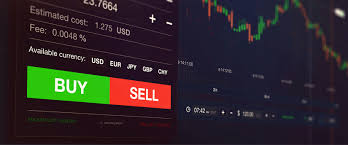
When entering the world of trading, especially in the Forex market, you may often come across the term ‘pip’. It’s a fundamental concept that every trader should understand. In this article, we will delve into the definition of a pip, its importance in trading, and how to calculate it accurately. For a deeper understanding of trading concepts, you can visit what is a pip in forex trading Trading Connexion.
What is a Pip?
A pip, or “percentage in point,” is a unit of measurement that represents the smallest price change for a currency pair in the Forex market. Most currency pairs are quoted to four decimal places, and a pip refers to the fourth decimal. For example, if the EUR/USD pair moves from 1.1050 to 1.1051, it has moved one pip. However, there are exceptions for pairs involving the Japanese yen, which are quoted to two decimal places. In this case, a movement from 110.50 to 110.51 would also represent one pip.
The Importance of Pips
Pips serve as a critical component in understanding price movement in Forex trading. They allow traders to quantify their gains or losses, facilitating a better assessment of their overall performance. Instead of focusing solely on the price level of a currency, pips help traders to assess the magnitude of the price changes. This is especially useful in volatile markets where small fluctuations can translate into significant monetary increments.
How Pips Work
In trading, the concept of pips helps in creating a common language among traders about currency movements. For instance, if you buy the EUR/USD at 1.1050 and later sell it at 1.1060, you have gained 10 pips. Similarly, if you were to sell it and had a sell price of 1.1040, it would mean you had lost 10 pips. Understanding how pips function is crucial for risk management and profit calculation.
Calculating Pips
To calculate the value of a pip, you need to consider the size of your trade (in lots) and the exchange rate of the currency pair. Here’s a simple formula:
Pip Value = (1 Pip / Exchange Rate) * Lot Size
For example, for a standard lot (100,000 units) in the EUR/USD pair at an exchange rate of 1.1050, the pip value would be calculated as follows:
- Pip Value = (0.0001 / 1.1050) * 100,000
- Pip Value ≈ $9.05

This means that for every pip movement in this pair, a trader would gain or lose approximately $9.05 when trading a standard lot.
Pip Value Variations by Lot Size
The pip value will vary depending on the lot size you are trading:
- Standard Lot Approximately $10 per pip for most pairs.
- Mini Lot Approximately $1 per pip.
- Micro Lot Approximately $0.10 per pip.
Understanding these variations is vital for managing risk and calculating potential profits and losses in your trading strategy.
How Pips Affect Your Trading Strategy
Pips play a significant role in determining how traders strategize and place trades. Here are several considerations to keep in mind:
- Risk Management: Knowing the pip value helps you to effectively calculate your stop-loss levels and position sizes, which can significantly affect your risk management strategy.
- Setting Goals: Traders often set price targets based on pips. Whether you are aiming for a few pips or several dozen, having clear targets can help maintain focus and discipline.
- Understanding Volatility: The number of pips a currency pair moves during a trading session reflects its volatility. Pairs with wider pip ranges can offer more opportunities for profit, but they also come with higher risk.
Pips and Spreads
The concept of pips is closely linked with spreads in trading. A spread is the difference between the bid price and the ask price of a currency pair, often measured in pips. Understanding the spread is essential as it directly affects your profitability. For instance, if you enter a trade with a 3-pip spread, you’ll need the price to move in your favor by at least 3 pips to break even.
Conclusion
In summary, understanding what a pip is and how it functions in trading is fundamental for anyone venturing into the Forex market. Whether you’re aiming to profit from small price changes or trying to improve your risk management methods, a solid comprehension of pips will aid you in making informed trading decisions. With this knowledge, traders can better navigate the complexities of the Forex market and devise strategies that align with their trading goals.
Enhancing your trading skills requires continuous learning and adaptation. Therefore, keep exploring and consider utilizing additional resources to further your understanding of trading concepts.
